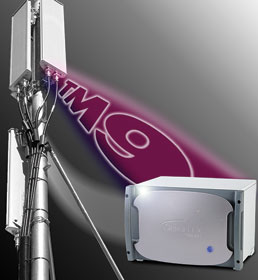

Aeroflex has added support for 3GPP Release 10 (Rel-10) Transmission Mode 9 (TM9) to its TM500 LTE-A Single UE Test Mobile instrument, which allows enhanced network capability and performance by flexible use of MIMO with minimum additional overhead.
As demand grows for LTE-A, engineers developing and testing base stations (eNodeB) need to be able to verify network performance against the latest 3GPP specifications as soon as they are introduced.
The TM500 LTE-A Test Mobile tracks the 3GPP roadmap, providing a fully software-upgradeable path from functional single user equipment (UE) test, through multi-UE, to load testing based on the emulation of thousands of UEs working in multiple cells. TM9 is the latest step in this roadmap, enabling the testing of 3GPP Release 10 enhancements including the potential for higher-order MIMO and beamforming.
The TM500 provides demodulation of downlink (DL) data based on the demodulation reference signal (DMRS) and calculation of channel state information (CSI) feedback from the UE. This information consists of the Pre-coding Matrix Indicator (PMI), Rank Indicator (RI), and Channel Quality Indicator (CQI), which are based on the newly-introduced reference signal (CSI-RS).
With TM9 support, the TM500 LTE-A Single-UE Test Mobile now allows testing of key TM9 features in a single-cell configuration, allowing its functional performance to be verified. Logging of both Rel-10 related protocol messages and power levels of these newly-defined reference signals, CSI-RS and DMRS, has been added, to ease debugging of the feature.
More about Transmission Mode 9
TM9 is a new transmission mode introduced with 3GPP Release 10 (LTE-A), which enables the enhancement of network capabilities and performance with minimum addition of overhead.
TM9 is designed to combine the advantages of high spectrum efficiency achievable through higher-order MIMO and cell-edge data rates, coverage and interference management, which can be achieved through the use of beamforming.
Flexible and dynamic switching between single-user MIMO (SU-MIMO) and an enhanced version of multi-user MIMO (MU-MIMO) are also provided. A new Downlink Control Information (DCI) format known as format 2C is used for TM9 data scheduling.
Two new reference signals are defined in TM9: Channel State Information Reference Signal (CSI-RS) and Demodulation Reference Signal (DMRS). The first is used from the UE to calculate and report the CSI feedback (CQI/PMI/RI), while the latter is an evolution providing support for more layers of the UE specific reference signal that is already used for beamforming in Rel-9, and is used for signal demodulation.
| Tel: | +27 12 452 0400 |
| Email: | [email protected] |
| www: | www.measuretest.co.za |
| Articles: | More information and articles about Measuretest |
© Technews Publishing (Pty) Ltd | All Rights Reserved